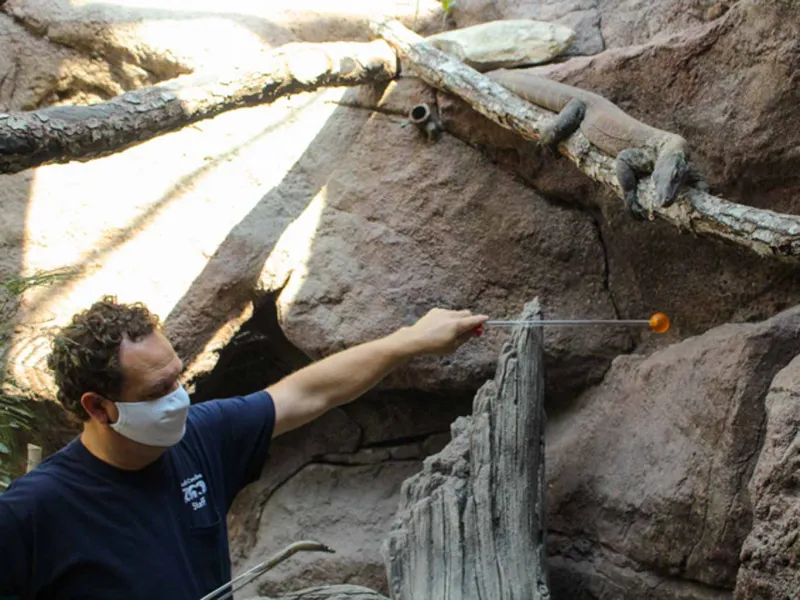Written by Ezra Ellis, Zookeeper, North Carolina Zoo
How to train a dragon….wait…what? No, not those dragons; we are going to talk about Komodo dragons! Komodo dragons are the largest lizards in the world, and we are lucky enough to have two right here at the North Carolina Zoo. Our male Monte' and his sister Marigold came to us when they were one year old, from the Fort Worth Zoo. You might be asking yourself why we have Komodo dragons, an Indonesian species when we only have North American and African animals at the North Carolina Zoo? Well, it is simple really, they are the first arrivals, ambassadors if you will, for our Asia expansion that will be breaking ground in the near future.
We brought Monte' and Marigold to the Zoo as youngsters to work on training or behavior management with them. Adult male Komodo dragons can reach upwards of 10 feet long and 200lbs; females check-in at about half that size. Understandably, we wanted to do this while they were young and SMALL! While "small," young Komodo dragons are as fast as lightning bolts with sharp teeth (60) and claws, and an insatiable appetite. That appetite is an excellent motivator for training because they are always motivated, i.e., perform a behavior for a food item.

Ezra doing "Target" training with Marigold
Komodo dragons are intelligent and pick up training well. Monte' and Marigold had some training before they came to the Zoo, so we had a little head start. We train them by positive reinforcement: giving the animal a choice to perform the desired behavior when asked in exchange for a reward, such as a mouse, rat, or fish. The behaviors we routinely work on are called target, station and crate. These are all simple behaviors that Monte' and Marigold have the choice to perform. If asked to "Target," they touch their rostrum (nose) to an orange ball on a stick. "Crate" is pretty self-explanatory. "Station" is when we ask them to go and stand on a designated spot. In all cases, they receive a food item as positive reinforcement after performing the behavior.
Pictured Above: Marigold training to "Target"
Establishing these behaviors allows us to move the dragons safely around by targeting from one area to another; or having them shift into a crate for moves from one habitat to another. This limits their stress and allows them to participate voluntarily in their husbandry and health care in a safe manner.
Unfortunately, Monte' and Marigold's habitat, the Desert Dome, is closed currently due to the COVID-19 restrictions, but when it reopens to the public, you may see either one of them on habitat. Because they are siblings, they aren't a breeding pair, so we rotate them between the guest view habitat and a behind the scenes habitat every 30 - 90 days. Monte' and Marigold are working on their behaviors and look forward to being able to view guests from their perch in the near future.






